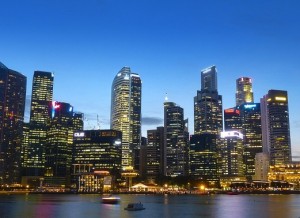
With cities already experiencing water and sanitation problems due to the current systems being unable to cope with the ingress of people, it is critical that new ideas and innovative thinking need to be employed in the planning of cities now and in the future. If this is not done, this unprecedented growth will not be able to be accommodated; there will be insufficient necessary resources, and the future of cities will be unsustainable.
Possible solutions focusing on education and knowledge-sharing in the field of urban planning were highlighted at the recent Sustainable Cities Conference, hosted by IHS Erasmus and the SUSTAIN Project at Erasmus University in Rotterdam.
City-To-City Information Sharing has been highlighted as a key method for cities to learn from each other while at the same time adapting best practices to their local context. A good example of the United Nations’ International Strategy for Disaster Reduction “Making Cities Resilient: My City is Getting Ready†campaign partnering of the City of Gothenburg (Sweden) partnering with the City of New Orleans (US) to exchange ideas and best practices based on their similarities is a perfect example of this.
Engaging Local Communities in City Planning is vital, as shown by Dr Talat Munshi of CEPT University in India, where urban areas are growing exponentially as people flee rural poverty; this social dynamic must be considered when planning Indian cities, and can be done by adapting some practices from Europe to local contexts in developing regions.
Achieving Sustainable and Resilient Cities means that collaborative and cross-cutting approaches must be taken because, as John Batten, Global Director of Cities at Arcadis, put it, “Cities are their own unique ecosystems, living and growing entities … these ecosystems work best when economic, social, transport and utility infrastructure operate together efficiently and in harmony. In essence, when resiliency is at work.â€
Urban Planners Are the Glue in the City because they have the ability to activate the cross-sectoral approach required to achieve sustainable and resilient cities because of their understanding of the languages of other experts and can therefore bring them together to establish a common vision.
Cities are Knowledge and Innovation Hubs that have transformative power as urban labs. This has been proven by the experimental climate resilient project, the Rotterdam Solar-Powered Floating Pavilion, a project during which the developers were able to gather evidence and learning outcomes on an assortment of ideas previously not even considered.
Get bottled water cooler and mains water cooler from Living-Water.





